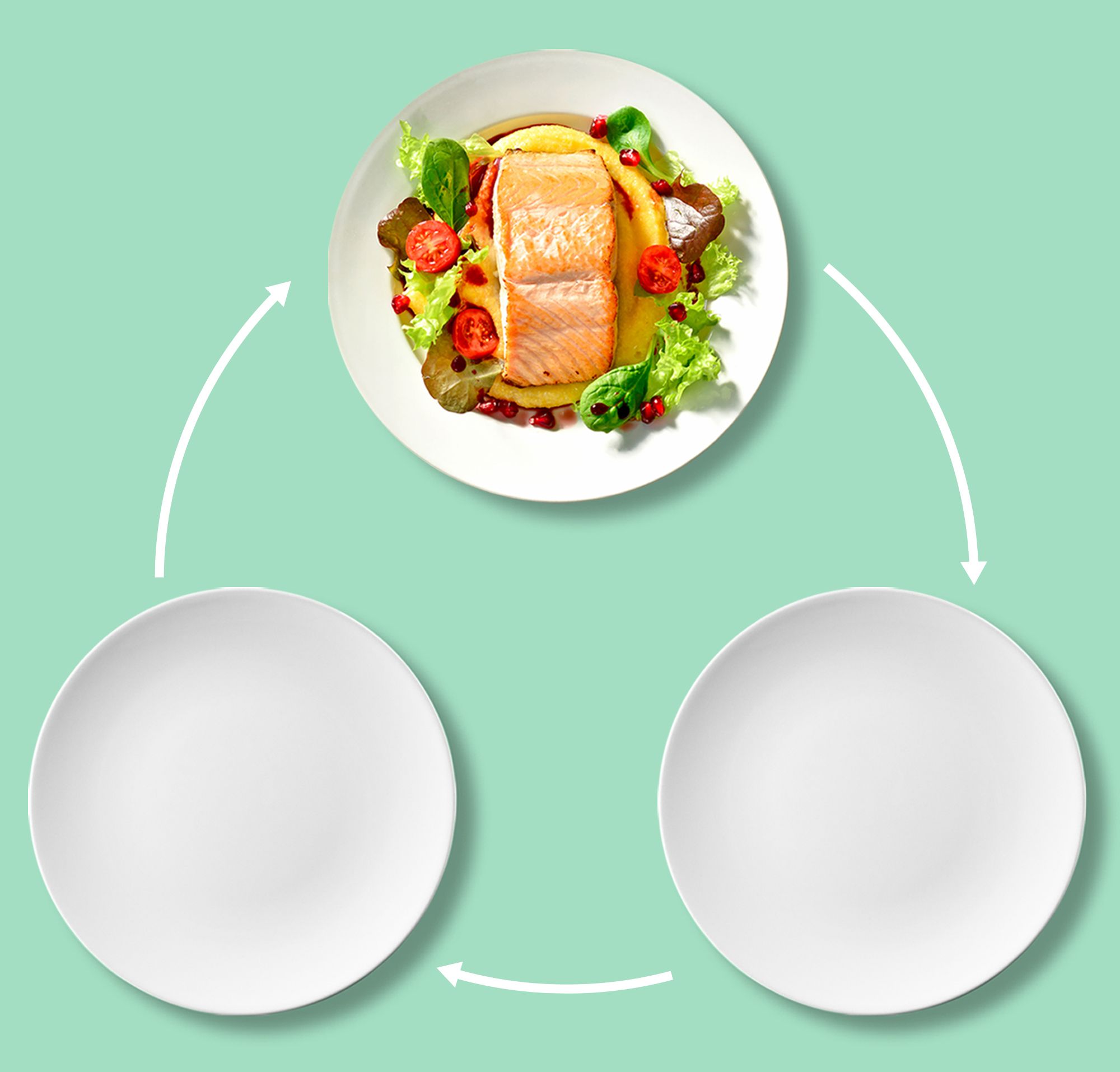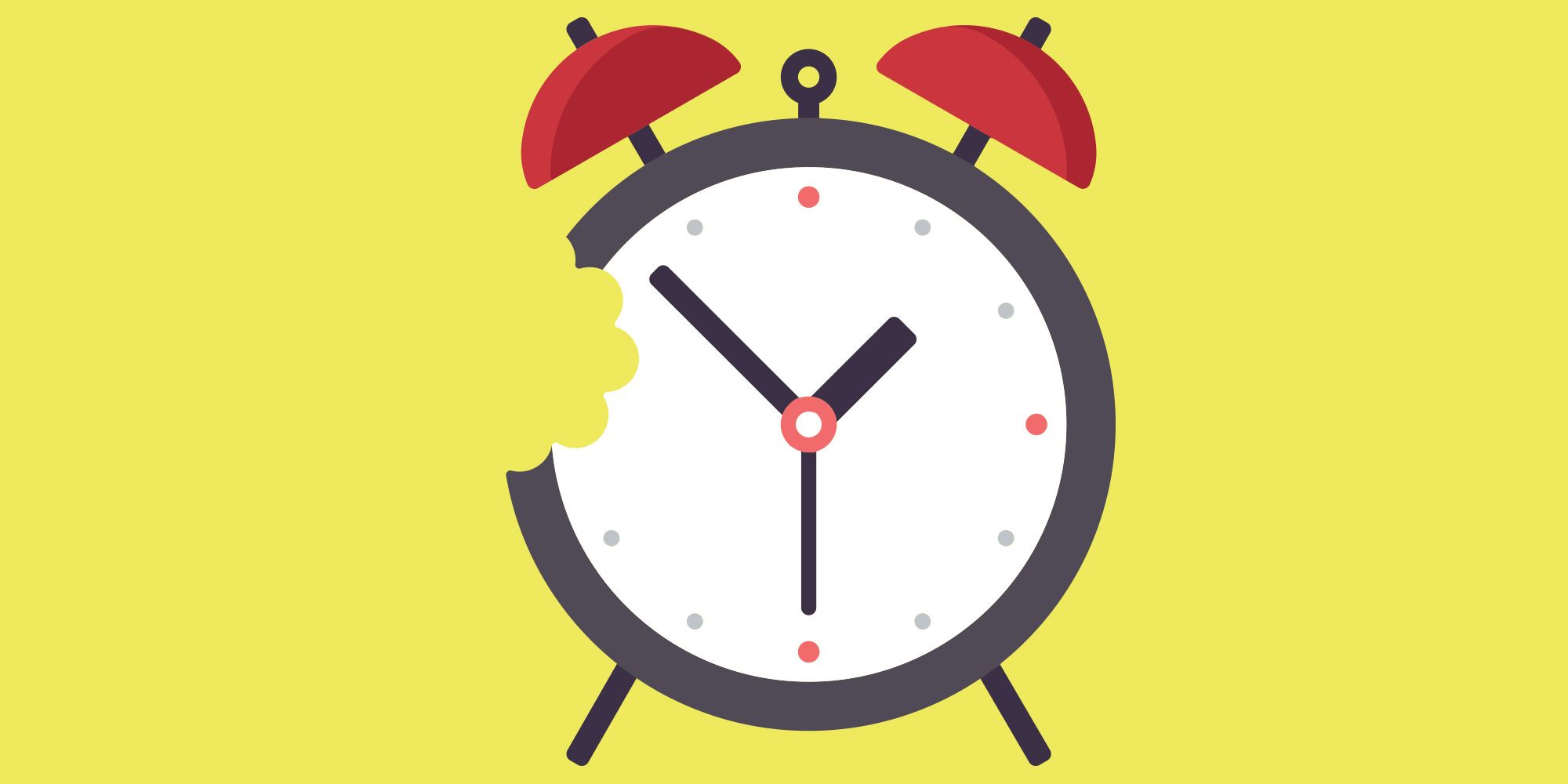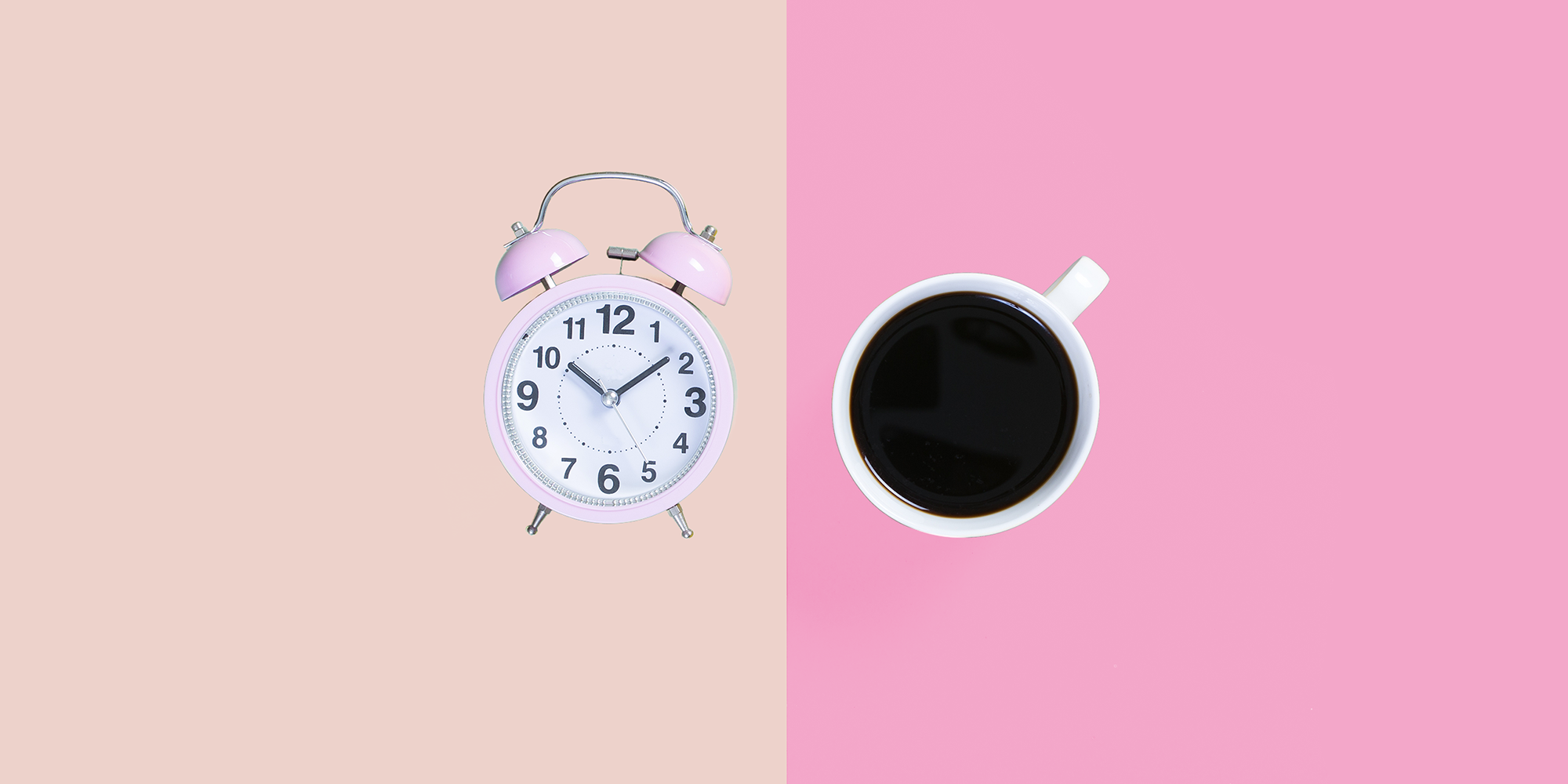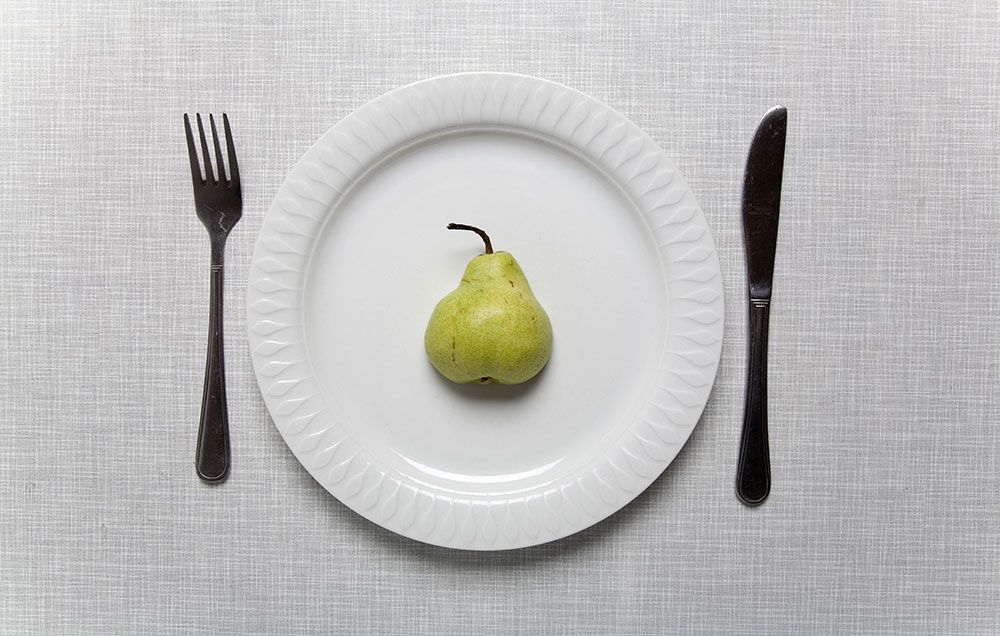Home » Diet & Food »
You Can Say Goodbye To Counting Calories On The 16:8 Diet
Intermittent fasting is all the rage right now—heck, even Jennifer Aniston swears by it, saying she notices a “big difference” when she goes at least 16 hours between dinner and breakfast the next day. Jennifer’s talking about a specific type of fasting called the 16:8 diet, and while some forms of intermittent fasting can be extreme (I’m looking at you, OMAD diet), the 16:8 diet might actually be kind of good for you.
The concept is fairly simple: “The 16:8 diet is where you eat for about eight hours of the day and then ‘fast’ for the rest of the day,” explains Dana Hunnes, PhD, RD, a senior dietitian at Ronald Reagan-UCLA Medical Center. Yep, that’s a full 16 hours of no snacking or grazing whatsoever. (Don’t worry, you can still drink water though.)
I know: Spending 16 hours a day without food? Sounds tough. But before you get too freaked out, know that most people generally plan their eight hours of feasting for between 10 a.m. and 6 p.m. So yeah, you’re sleeping for a solid portion of the fast. (Whew.)
Jennifer’s not the only celebrity convert to the fasting lifestyle. Halle Berry swears by intermittent fasting combined with the keto diet, and Jennifer Garner even practices a form of fasted cardio to stay fit. Vanderpump Rules star Stassi Schroeder and Real Housewife Heather Dubrow swear by forms of the diet, too. Even Vanessa Hudgens says she’s all about intermittent fasting.
So should you try the 16:8 diet—and most importantly, will it really help you lose weight? Here’s what nutritionists have to say:
What exactly is the 16:8 diet?
It’s pretty simple. Basically, during your 16-hour “fasting” period, you limit yourself to black tea, coffee, or diet soda. Then, for the next eight hours, you can eat whatever you want (no calorie counting needed). That’s it.
 Jewelyn Butron
Jewelyn Butron
Scientifically, at least, the 16:8 diet seems to check out. In a recent (albeit, small) study published in the journal Nutrition and Healthy Aging, 23 obese men and women followed the 16:8 diet for 12 weeks. Compared to a group that ate normally, those on the 16:8 diet took in 350 fewer calories per day, lost a modest amount of weight (about 3 percent of their body weight on average), and lowered their blood pressure.
But, keep in mind: This was a small study and few others have examined the 16:8 diet specifically, so it’s tough to draw any firm conclusions just yet. “More research needs to be conducted before we can see if and how it can be implemented into an actual plan effectively,” confirms Beth Warren, RDN, founder of Beth Warren Nutrition and author of Secrets of a Kosher Girl.
Still, other types of intermittent fasting (and there are tons of different kinds) show promise. The 5:2 diet, for example (eat normally five days a week, cut back to 20 percent of your normal daily calorie intake for the other two), resulted in more weight and fat loss compared to day-to-day calorie restriction in a 2017 study in the International Journal of Obesity.
What can you eat on the 16:8 diet?
Honestly, you can eat whatever you want on the 16:8 diet. There’s no calorie- or macro-counting required as part of the plan.
That being said, if you want to lose weight, you’ll want to make sure your meals consist of a healthy balance of protein, fats, and carbs, Eliza Savage, RD, a registered dietitian at Middleburg Nutrition in New York City, previously told Women’s Health. Think: grilled chicken, half of a sweet potato, and a grilled vegetable for lunch or dinner.
While it may be tempting to feast when you break your fast, you should aim for a small protein-rich snack (think: hard-boiled eggs) that you can eat slowly. By doing this,you’ll be better able to gauge your hunger cues and avoid overeating.
Some people find they see better results on the keto diet when combined with intermittent fasting, but sticking to a high-fat, low-carb diet certainly isn’t required.
So, will I lose weight on the 16:8 diet?
In theory, yes. But it’s hard to really know how the diet might benefit a wide variety of people since most research on the topic involves people who are obese, not just those looking to shed a few pounds.
One potential benefit of the 16:8 diet? “It can help if someone wants to lose weight because oftentimes overeating at night is a big factor in weight gain,” says Warren. “Fasting will take away that obstacle.” In this sense, the timing of your eating window can impact how much weight you lose: Typically, time-restricted eating mimics the way we ate before 24-hour drive-thrus and fully-stocked refrigerators (read: no midnight snacks).



Sticking to an eight-hour eating window during daylight hours allows your metabolism to run as it’s supposed to—you fuel up for energy during the day (when you’re most active), and stop eating for rest and recovery at night,per a 2017 article in the journal Nutrition Reviews.
It’s also likely that fasting can put your body into a state of ketosis (without actually having to do the full-on keto diet), which means your body starts burning fat for energy instead of carbs, says Warren. After your body runs through its glucose and glycogen stores (a.k.a. sugars you burn for energy), it then turns to the next-available fuel source: fat, explains Hunnes.
“Recent studies indicate that you might lose weight on this diet because when you fast, you are burning more fat for energy than you are carbohydrates,” she explains. This fat-burning and the metabolic shifts that come with might increase your chances of losing weight. (Of course, the time it takes to enter ketosis varies based on the individual. Typically, it takes anywhere from 12 to 32 hours of fasting, so your 16-hour fasting window might have you covered).
But is it really healthy to fast for 16 hours?
For starters, this diet (like literally any diet) might be hard to maintain. Say goodbye to dinner parties and late-night dates. And god forbid a friend is late to that 5 p.m. dinner you scheduled.
“It may be sustainable if you stick to the strict regimen,” Warren says. “However, this is difficult to maintain in real-life scenarios like social functions.”
Halle Berry uses intermittent fasting as part of her diet routine. Here’s how:
Beyond the downer of not being able to go out for a late-night fancy dinner, in rare cases the 16:8 diet could potentially lead to disordered eating, too, notes Hunnes. For example, if you’re someone who doesn’t do well with long periods of fasting, you might follow a 16-hour fast with a binge or even start to prolong fasting periods longer than you should. Both would be signs that the diet’s not working for you and that it could progress to something more serious like an eating disorder, she says.
If you eat too late, you could also potentially interfere with the quality of your sleep—so it’s best to eat earlier in the day, suggests Hunnes.
That said, two recent (once again, small) studies in Applied Physiology, Nutrition, and Metabolism show obese adults can stick to the 16:8 diet without developing or exacerbating body image issues, disordered eating patterns, or sleeping problems.
Should I try the 16:8 diet—and how do I start?
For a generally healthy person, there seems to be no harm in only eating for eight hours each day, says Hunnes.
And while more research is needed on the 16:8 diet, overall, intermittent fasting could improve cholesterol levels and brain function, and lower your risk of developing heart disease, cancer, and stroke. Still, you’re probably best off getting a clean bill of health from your doc before embarking on this diet, Hunnes notes.

So, how can you get started with the 16:8 diet? “It might be wise to gradually ease into longer periods of fasting,” says Hunnes. However, she points out, the long-term weight loss benefits from the 16:8 diet weren’t that much greater than those you’d reap if you just ate less throughout the day or switched to a more plant-based diet—so you could try simply cutting back on how much you’re eating or adding in more plant-based foods, too.
“It’s a personal choice, and everyone needs to make these choices based on their own lifestyles and ability,” Hunnes says.

Some people who should not do the 16:8 diet? People with diabetes, kidney disease, or certain metabolic disorders. These conditions can alter your body’s balance, storage, and use of insulin and glucose, making the 16:8 diet a possibly unsafe choice, says Hunnes.
Another no-go? Pregnant and breastfeeding mamas. In short, you’re eating for two, and you’d be depriving you and your baby of essential food, nutrients, and much-needed energy when you need it.
Otherwise? If you’re interested, give it a try. Just don’t expect a miraculous slim-down and be prepared for 16 potentially hangry hours ahead.
The bottom line: The 16:8 diet may help with weight loss, but more research is needed to draw any solid conclusions.
Source: Read Full Article

